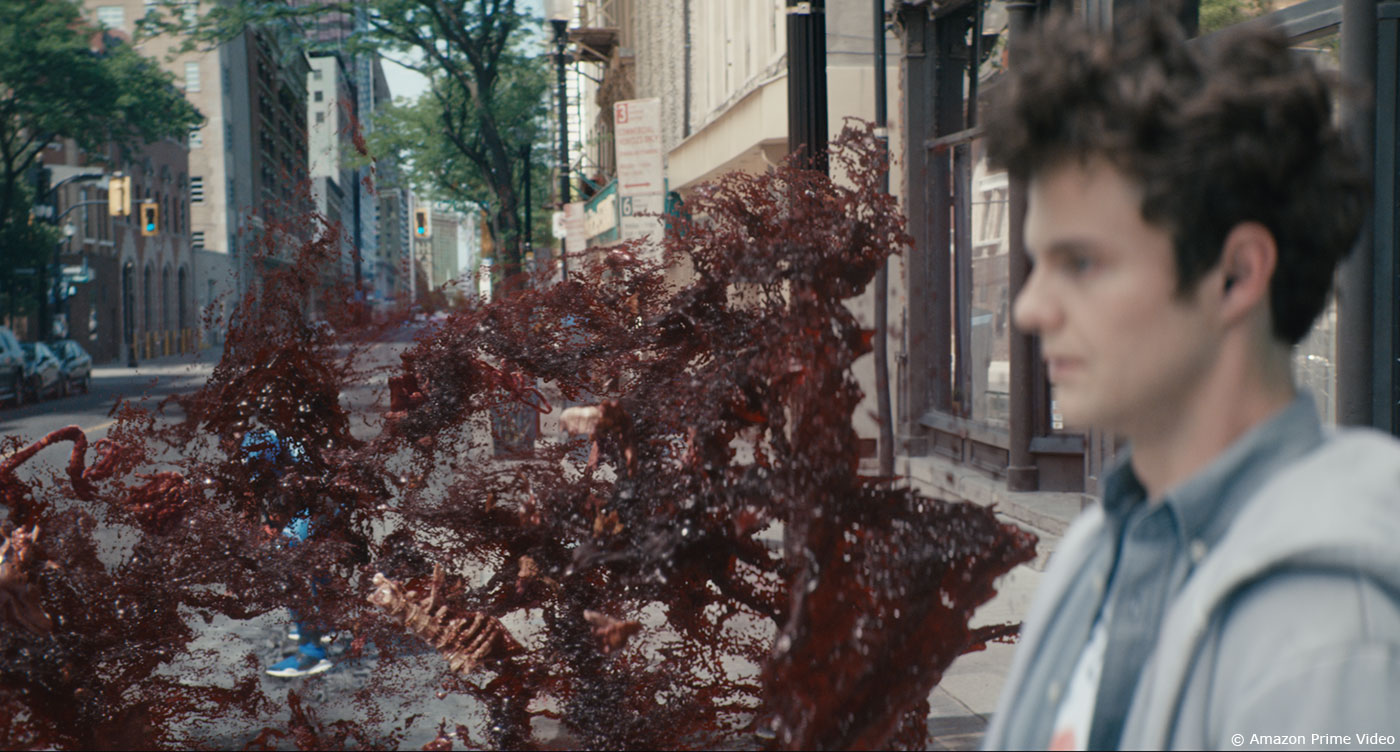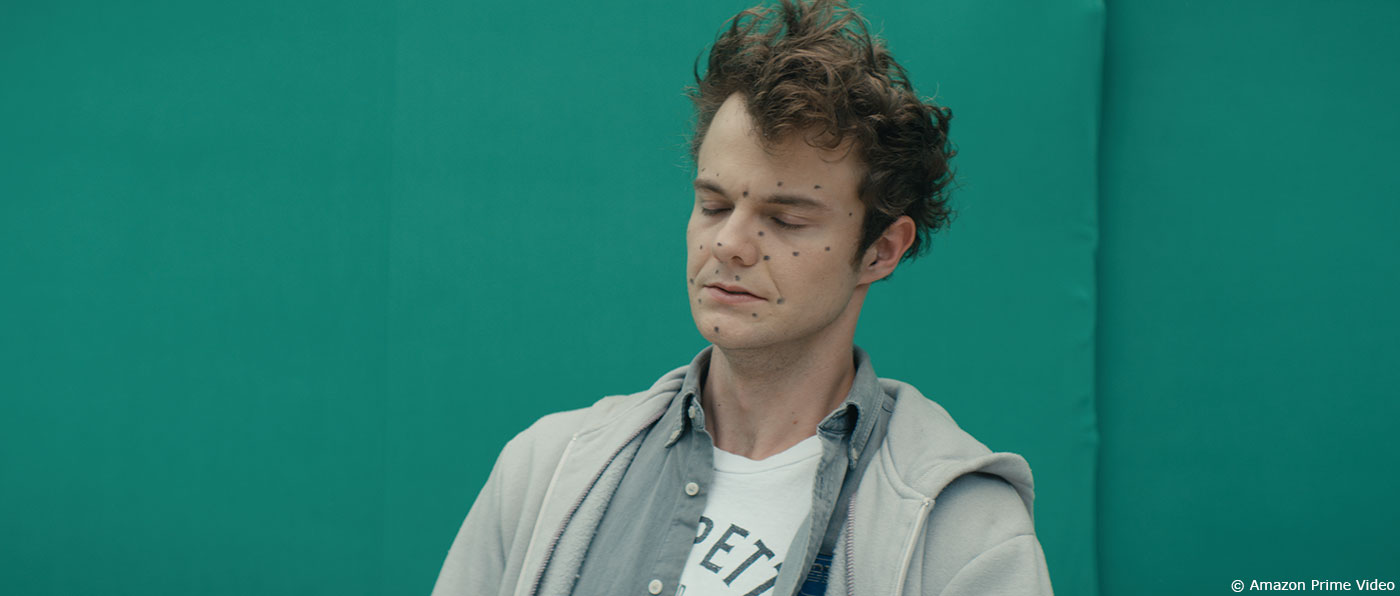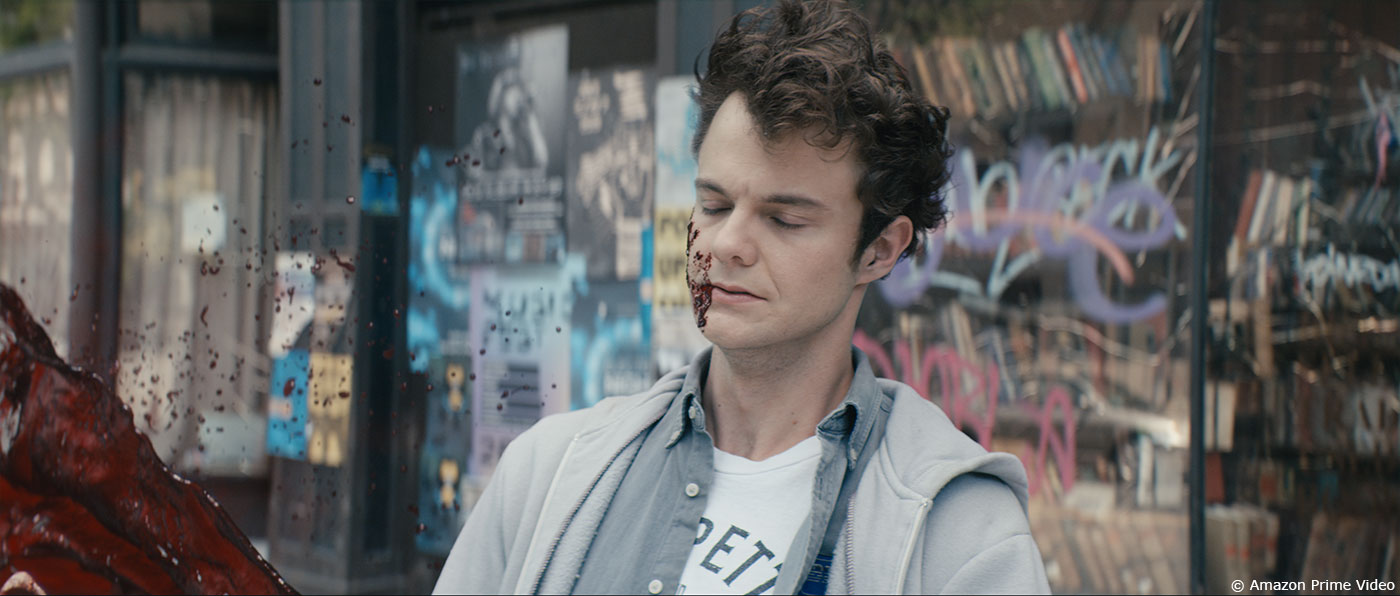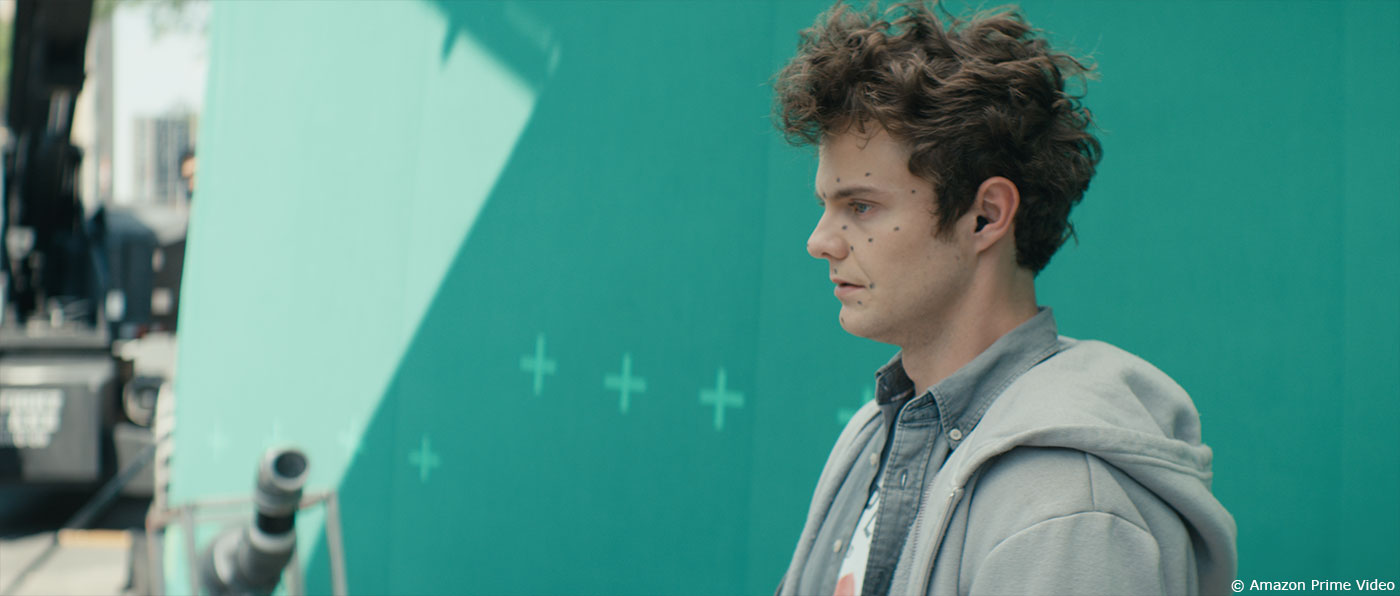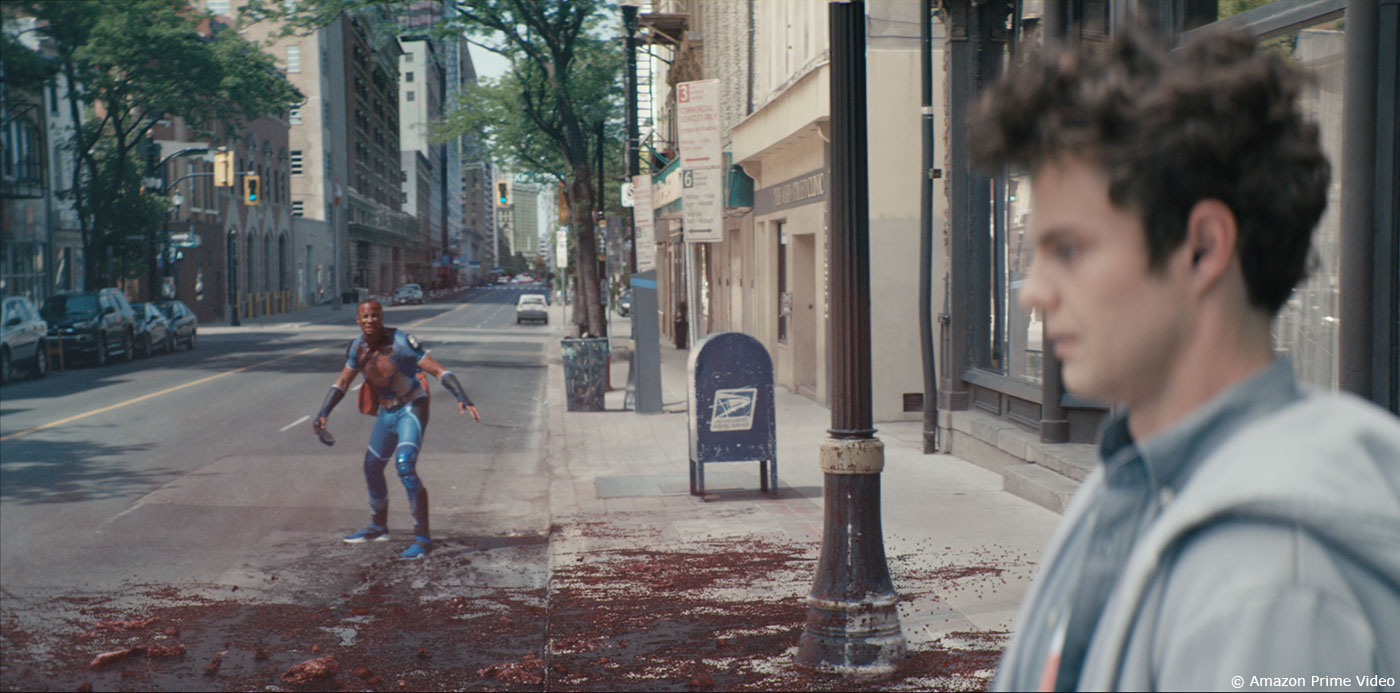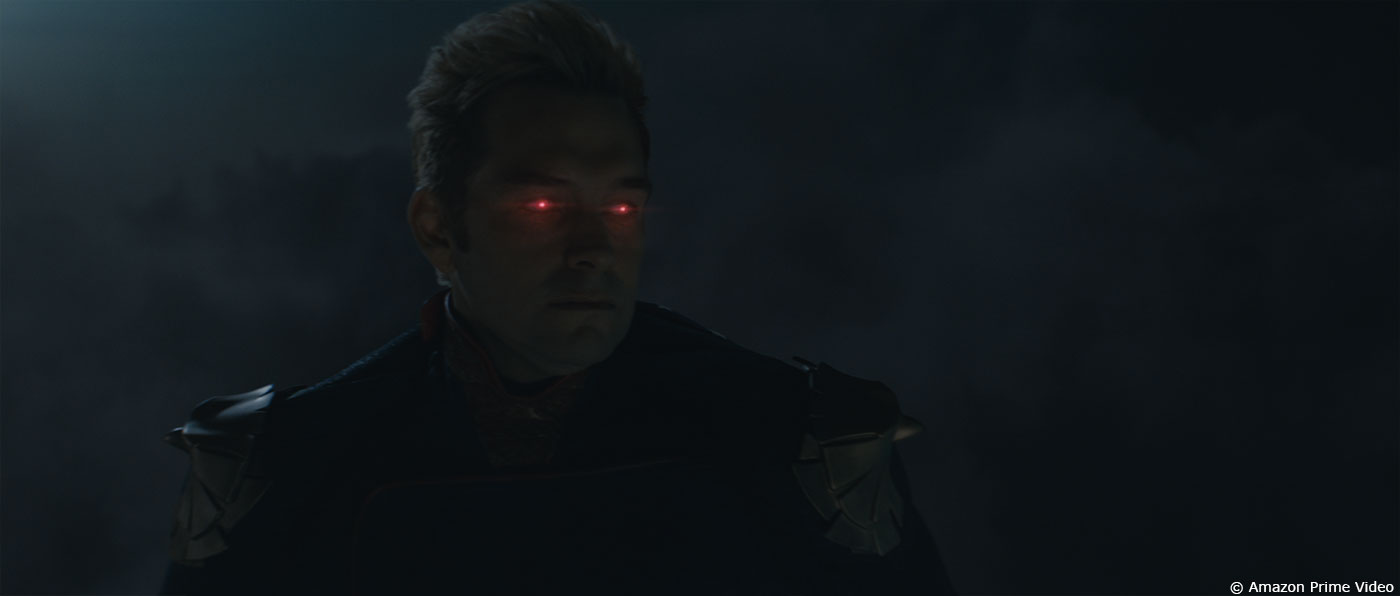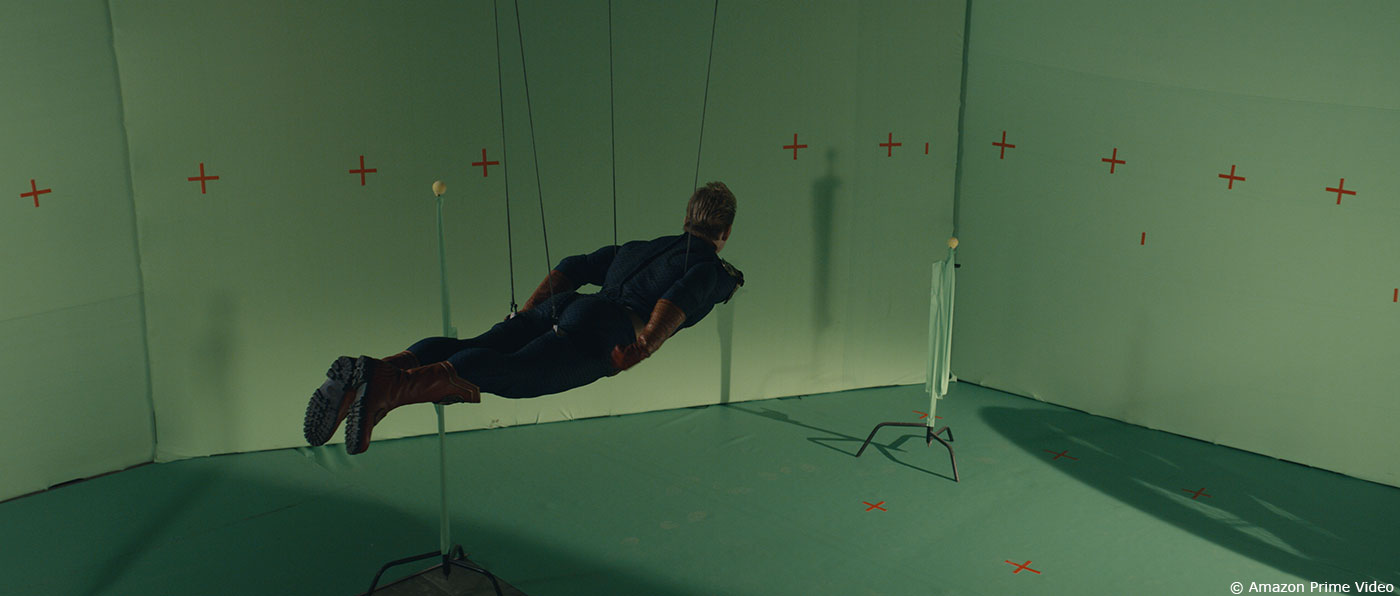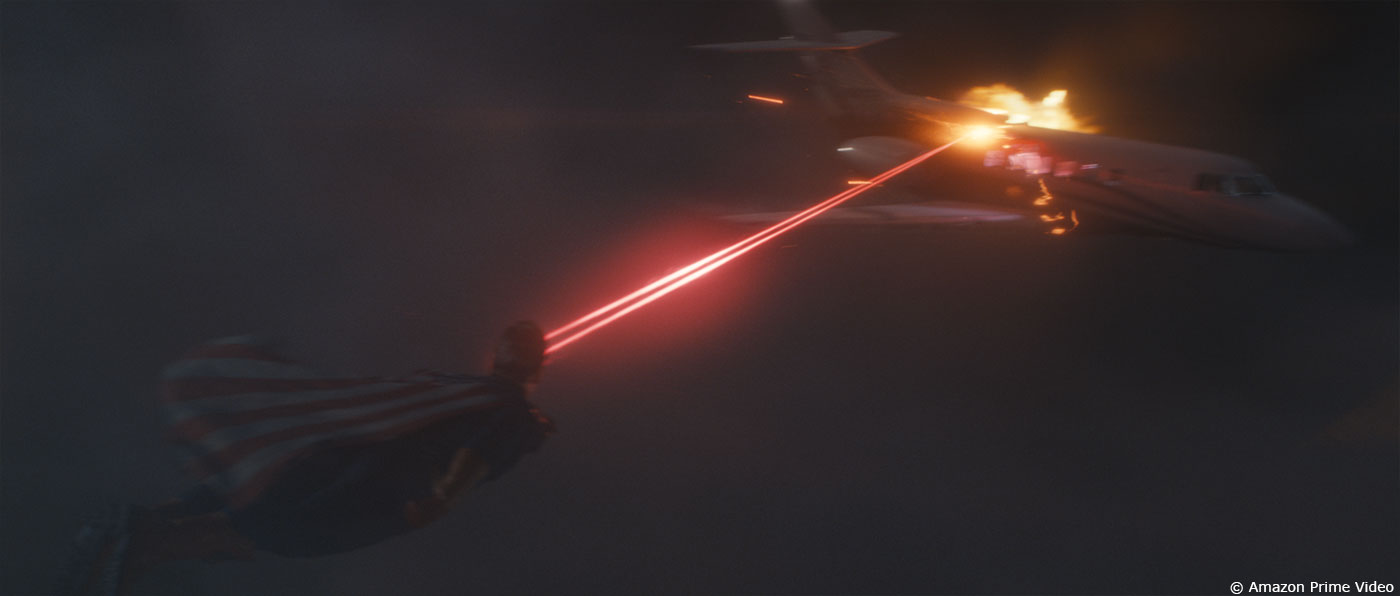Michael Enriquez began his career in visual effects more than 20 years ago. He worked on many projects like BATTLESTAR GALACTICA, HEROES and THE WALKING DEAD. As a VFX Supervisor, he took care of the effects of projects such as WESTWORLD, THE HOT ZONE and BIG LITTLE LIES.
What is your background?
Growing up in the LA area, I started as a 3D artist at a young age, working for a very small company that did work on Saturday morning cartoons for network television. A few years after I went to Stargate Studios as lead 3D artist. There I rose to 3D supervisor, then 2D supervisor, and finally Head of Creative Services. After 13 years there, I moved to DNEG where I am now a VFX supervisor.
How did you and DNEG get involved on this show?
Stephan Fleet, Overall VFX Supervisor for THE BOYS, had certain demands in mind when he was looking for vendors. He was looking for feature-level work, and how it could be leveraged into a tighter turnaround time and Andy Williams, Executive Producer here at DNEG, brought the work in. I was involved with some early conversations but took over looking after the DNEG portion of the work in early August of 2018.
How was the collaboration with the showrunners and VFX Supervisor Stephan Fleet?
Eric Kripke had a pretty clear sense of what he wanted this show to be. Stephan worked closely with Eric to help set the look and approach for the more elaborate shots. We had regular cineSync’s to go over notes and specific placement of elements on screen. At times other influences affected the process, but for the most part we knew what we had to shoot for, which in general was simply « real ».
What was their expectations and approach about the visual effects?
THE BOYS was always meant to be grounded and gritty. The powers of the various superheroes are meant to be as based in reality as possible. They also needed to look good!
How did you organize the work with your VFX Producer?
Siobhan Condon was the Line Producer on this show, and she kept us all on task and focused. She was critical to keeping on track and keeping the various moving parts of this project in order. Given that I am in Los Angeles and the work was done at DNEG in Vancouver, she ensured I was looking at what needed attention and that we communicated often.
How did you split the work amongst the DNEG offices?
While we often share work across the various sites, all of our work on THE BOYS (aside from roto, prep and matchmove) was done in Vancouver. Except for myself, of course, as I am based in LA, though I did fly out often to Vancouver.
What are the sequences made by DNEG?
We worked on the majority of the Homelander and A-Train sequences. Most notably the Robin death sequence and the Homelander airplane sequences.
Can you tell us more about the previs and postvis process?
We had no real previz or postviz period on this show. We right away started RND’ing various looks and FX approaches for the more complex shots.
The show begins with a terrible death. How did you approach this super slowmo shot?
There wasn’t much to hide behind in this shot, as it is a liquid simulation in slow motion. The arrangement of blood and body parts was quite art directed. We tried to show intermediate passes but it was very hard to tell depth without lighting. We ended up iterating many simulations to try to nail down the dispersion of blood desired.
What is the main challenge with the super slowmo shot with a change of speed and lots of FX in it?
The big reveal of Robin’s death was our most challenging shot as it was a very difficult shot to show progress quickly in. It went through a few different ideas on what form the gore would take. Also it was hard to sell depth with the camera move in this shot. There were many versions of the blood in many forms to try to sort out this issue.
Can you explain in detail about your work on this shot?
We assembled different takes with the FG actor and BG actor to get the complete shot. After tracking that we extrapolated Robin’s position and began the simulation exploration. Once we had sorted out the idea of how the main blood sim would work, the other gore was developed and placed where desired as the simulations were refined. From there we worked on affecting the environment and integration.
How did you handle the really gory aspect of this shot?
The body chunks were all soft body dynamics, and the blood all fluids. We tried to use more recognizable parts as other, meatier parts got lost in the blood. We had a few variants of how Robin would be represented in terms of gore, but we ended up with the separate chunks seen in the show.
Can you elaborate about the creation of Homelander?
We created Homelander’s digi-double based on a scan and photos from set. Any close-up flying was shot with the actor on wires. We would then add his cape. For the more distant shots, he was fully CG.
Can you tell us more about his cape?
Homelander’s cape was approached based on what it needed to do in the shot. Sometimes it just went along for the ride based on the anim, and other times it was very art directed and needed to have a lighter, airy feel.
How did you create and animate his deadly eyes laser beam?
Homelander’s face and eyes were tracked in 3D, and FX would create the various passes that made up the lasers. The eye detail was all done in compositing.
Can you explain in detail about the plane destructions?
The plane destruction in the nightime scene in episode 1 was all handled in Houdini. Fire and smoke were simulated to show the speed the plane was traveling, and the passengers were lit on fire as well to increase visibility.
How did you create the aerial environments and especially the clouds?
For the episode 1 sequence where Homelander blasts the plane at night, the clouds were created in Houdini, but laid out and rendered in Clarisse. For the daytime plane sequence in episode 4, all clouds were created and rendered in Terragen, including the establishing shot.
A-Train can run super fast. How did you approach this character?
Initially there was discussion of visible energy being involved in A-Train’s effect. As we moved forward, the show’s more grounded vibe prevailed and his effect became just the environmental disturbance created by his speed. Objects blowing around, dust being kicked up, and ground destruction where appropriate. Each shot was approached individually depending on what was around him.
How did you adapt his FX for the slowmo shots?
Since there was no signature energy effect, we simply affected the forces in the environment in slow motion.
Which sequence or shot was the most challenging?
Definitely the Robin death sequence.
Is there something specific that gives you some really short nights?
Figuring out the Robin death sequence was harrowing…
What is your favorite shot or sequence?
I enjoyed the plane sequences. The shot of the plane being destroyed specifically. We had a good amount of freedom in laying out the cloudscape and figuring out how the plane would break apart. After adding dynamic digi-doubles for the people in the plane, we had a hard time seeing them given the darkness of the shot. Adding some lightning strikes helped but not enough. In the end we ended up simulating fire on them so we could literally light them up as they flew out.
What is your best memory on this show?
Being in Vancouver with the crew in January was a great time. We had lots of work going on during that time and had a few late nights, but it was good fun.
How long have you worked on this show?
I worked on THE BOYS for 8 months in total.
What’s the VFX shots count?
DNEG had 152 shots on the show.
What was the size of your team?
We had a relatively small core team and we brought on artists as the shot count grew. We likely had 20-30 people at any given point.
What is your next project?
Since wrapping on THE BOYS, I’ve supervised THE HOT ZONE, and am now on a couple of new projects that I’m not yet allowed to talk about.
What are the four movies that gave you the passion for cinema?
While there are many movies I love and admire, the four that got my attention as a youth were ALIENS, STAR WARS, TERMINATOR 2 and JURASSIC PARK.
A big thanks for your time.
WANT TO KNOW MORE?
DNEG TV: Dedicated page about THE BOYS on DNEG TV website.
© Vincent Frei – The Art of VFX – 2019


